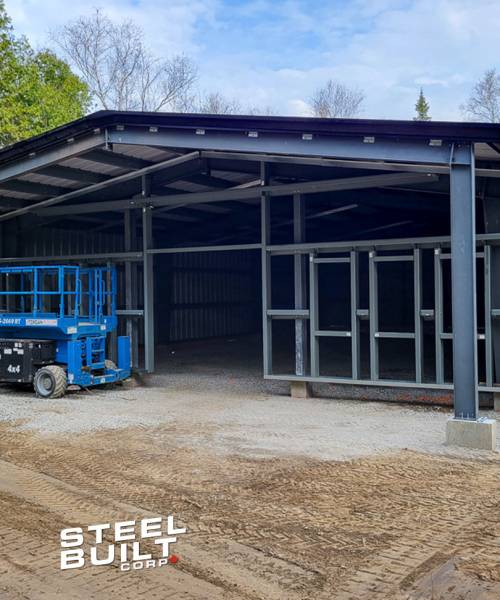Introduction
Steel buildings have revolutionized the construction industry, providing robust, versatile, and sustainable solutions for various architectural needs. From towering skyscrapers and expansive warehouses to modern homes and agricultural barns, steel’s inherent properties make it a preferred material for building structures across the globe. This article explores the evolution, advantages, and diverse applications of steel buildings, highlighting why they are a cornerstone of modern construction.
Historical Evolution of Steel Buildings
The use of steel building in construction dates back to the late 19th century when the material began to replace iron due to its superior strength and flexibility. The advent of the Bessemer process allowed for the mass production of steel, making it more accessible and affordable. The early 20th century saw the rise of steel-framed skyscrapers, with iconic structures like the Empire State Building showcasing the material’s potential.
Post-World War II, the construction industry saw significant advancements in steel fabrication and welding techniques, leading to more sophisticated and larger structures. By the late 20th century, steel buildings were not limited to industrial applications; they started to permeate residential and commercial construction, heralding a new era of architectural design and engineering.
Advantages of Steel Buildings
Durability and Strength
Steel is renowned for its high tensile strength and durability. Unlike wood, which can warp, crack, or rot, steel remains intact and resilient against environmental factors. This durability ensures that steel buildings can withstand extreme weather conditions, including heavy snow, strong winds, and seismic activities. Additionally, steel is resistant to pests like termites, which can devastate wooden structures.
Cost-Effectiveness
Steel buildings often present a more cost-effective option compared to traditional construction materials. The pre-engineered nature of steel components allows for off-site manufacturing and quick on-site assembly, significantly reducing labor costs and construction timelines. This efficiency minimizes project delays and helps keep budgets on track.
Versatility in Design
One of the most compelling advantages of steel is its versatility. Steel can be molded into various shapes and sizes, enabling architects to design innovative and aesthetically pleasing structures. Large open spaces, high ceilings, and unique architectural features are easily achievable with steel frameworks. Moreover, steel buildings can be expanded or modified with relative ease, offering long-term adaptability for changing needs.
Environmental Sustainability
In an era focused on sustainability, steel stands out as an environmentally friendly building material. It is one of the most recycled materials globally, with steel production often incorporating a significant percentage of recycled content. This recycling process reduces the demand for raw materials and lowers the overall carbon footprint of construction projects.
Additionally, steel buildings are energy-efficient. The precision of steel fabrication ensures tight construction, improving insulation and reducing energy consumption for heating and cooling. Many steel buildings also integrate renewable energy systems, such as solar panels, further enhancing their sustainability.
Applications of Steel Buildings
Commercial and Industrial Use
Steel buildings dominate the commercial and industrial sectors due to their ability to support large spans and heavy loads. Warehouses, manufacturing plants, distribution centers, and retail spaces benefit from the robust and flexible nature of steel construction. The quick assembly time is particularly advantageous for businesses looking to start operations swiftly and efficiently.
Agricultural Structures
In agriculture, steel buildings are ideal for barns, storage sheds, and livestock shelters. The strength and durability of steel ensure these structures can protect equipment and livestock from the elements. Furthermore, steel buildings can be designed with ventilation and insulation systems that are essential for agricultural applications, maintaining optimal conditions for storage and livestock welfare.
Residential Buildings
Steel is increasingly being used in residential construction, offering modern, contemporary homes that are highly customizable. Steel homes are resistant to common issues such as termite damage and mold growth, providing a healthier and more durable living environment. The flexibility in design also allows homeowners to create unique and innovative living spaces.
Recreational and Institutional Buildings
Recreational facilities, such as sports arenas, community centers, and gyms, benefit from the open spaces and structural integrity that steel provides. Educational institutions and healthcare facilities are also turning to steel construction for its durability, safety, and cost-effectiveness. These buildings require a high degree of reliability and safety, making steel an ideal choice.
The Future of Steel Buildings
The future of steel building is bright, driven by ongoing technological advancements and a growing emphasis on sustainable construction practices. Innovations such as 3D printing, advanced coatings, and smart building systems are poised to make steel buildings even more efficient and durable. As the global construction industry continues to evolve, steel will remain a critical material, offering solutions that meet the demands of modern architecture and environmental stewardship.
Government incentives and regulations aimed at promoting sustainable development are likely to further drive the adoption of steel construction. In urban areas, where space is limited and construction speed is essential, steel buildings provide practical and efficient solutions. Their ability to be erected quickly with minimal disruption makes them ideal for dense urban environments.
Conclusion
Steel buildings have transformed the construction landscape, offering unparalleled advantages in terms of durability, cost-effectiveness, versatility, and sustainability. From towering skyscrapers to agricultural barns, steel structures are integral to a wide range of applications. As technology advances and the push for sustainable building practices intensifies, steel buildings will continue to play a vital role in shaping the future of construction, providing resilient and innovative solutions for the built environment.


